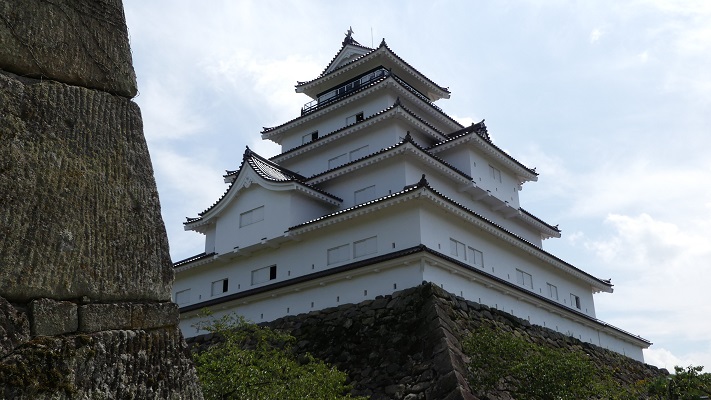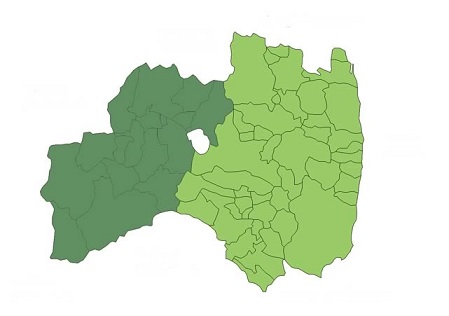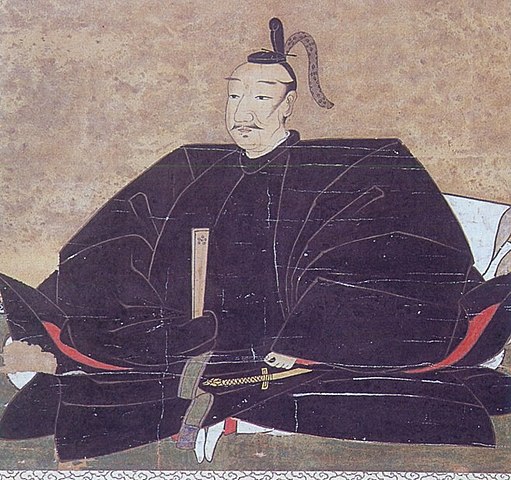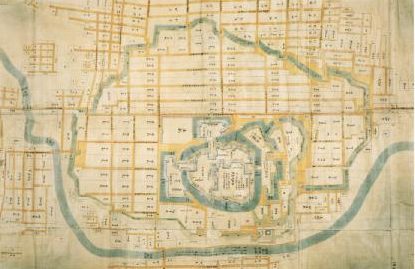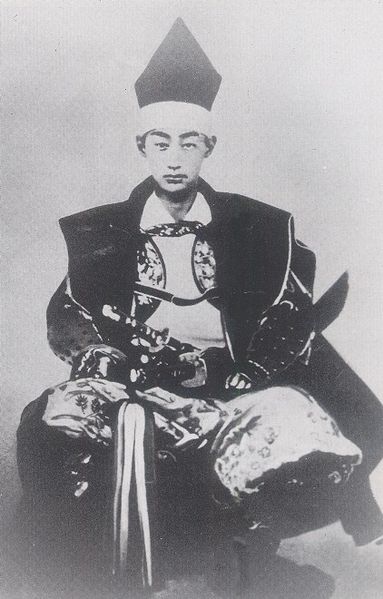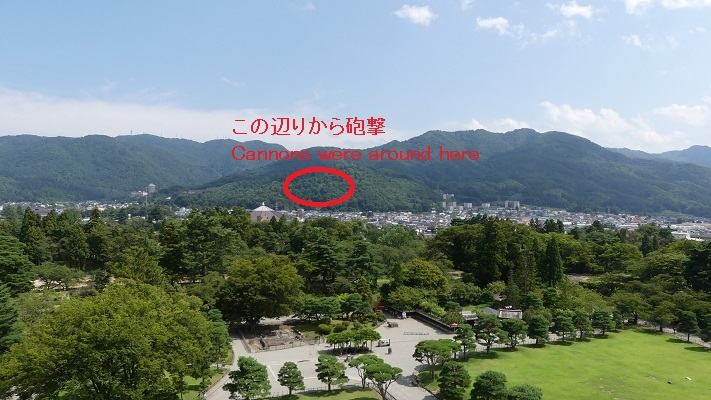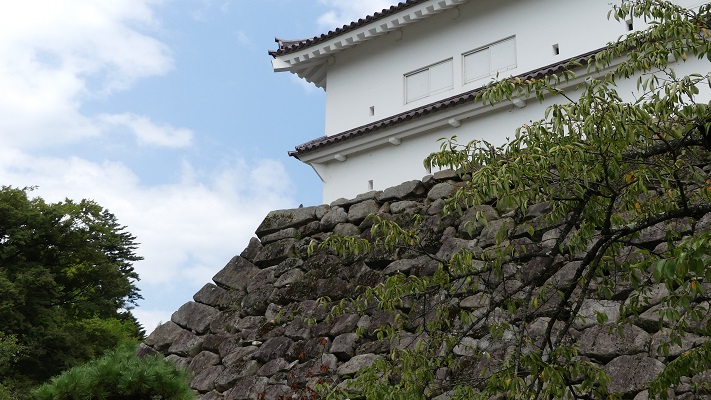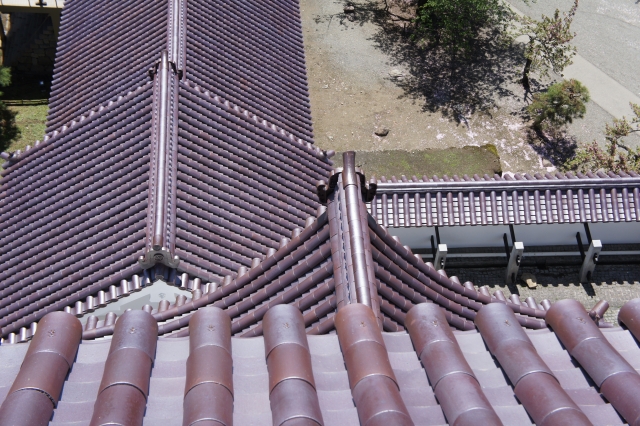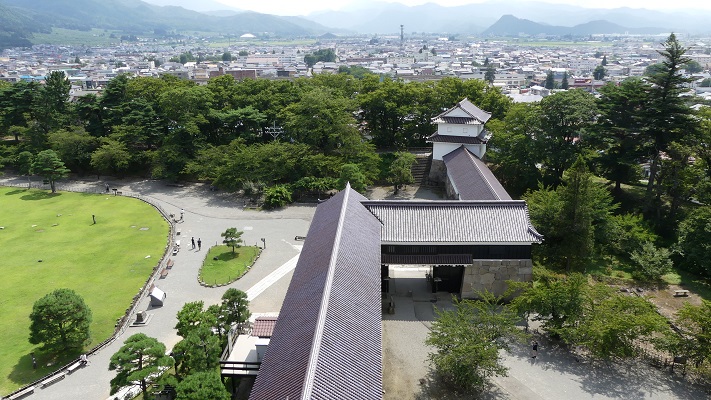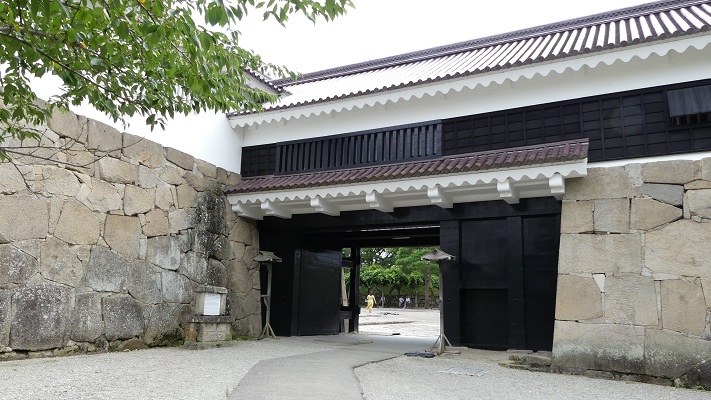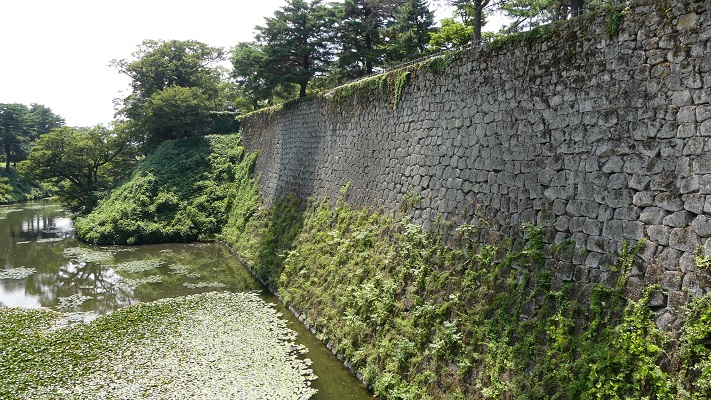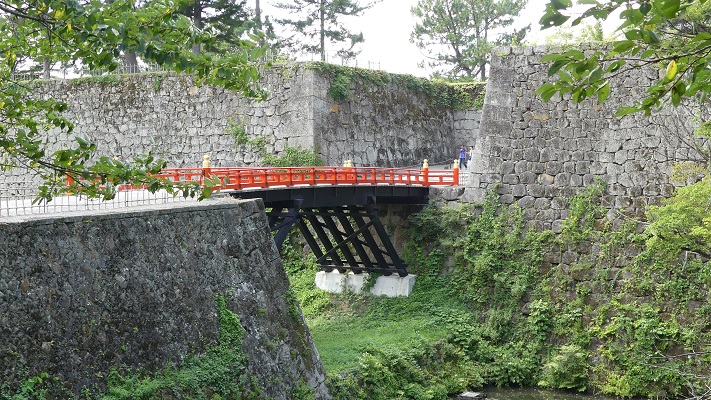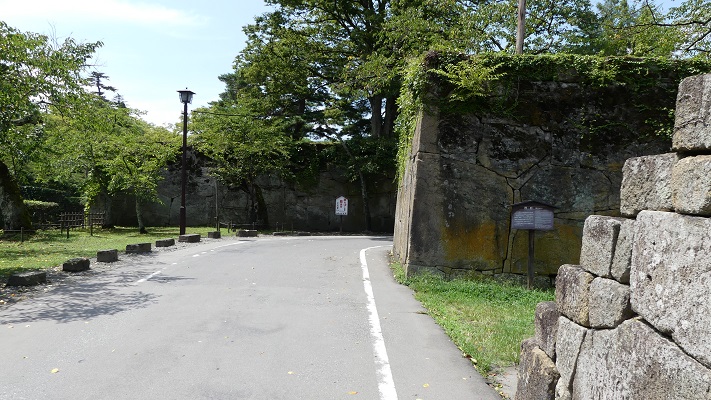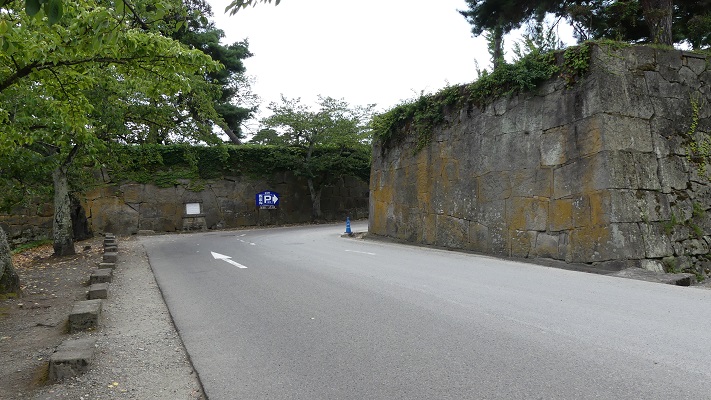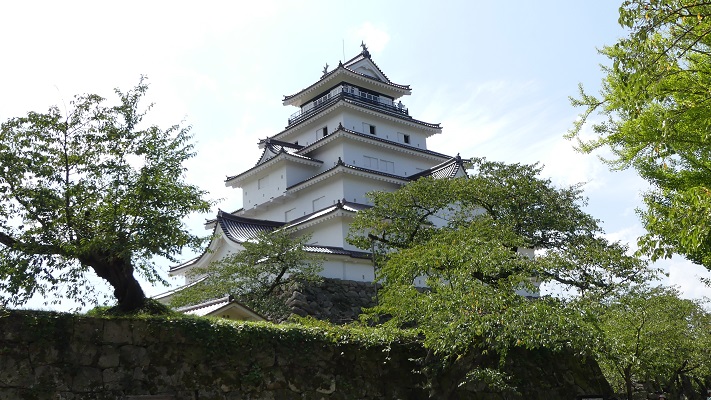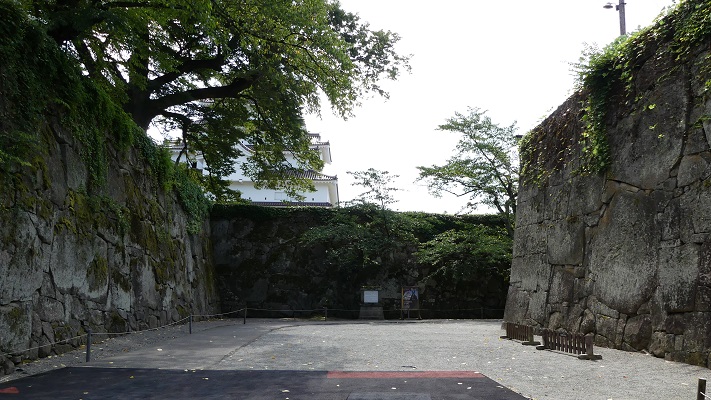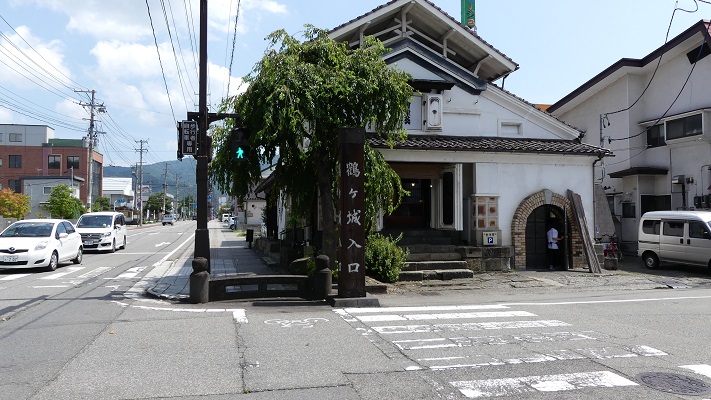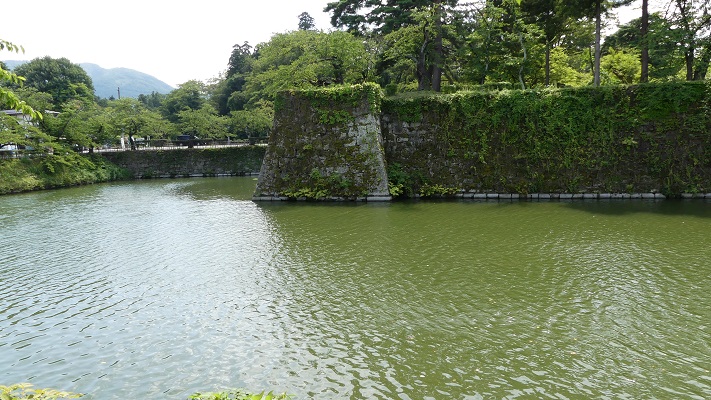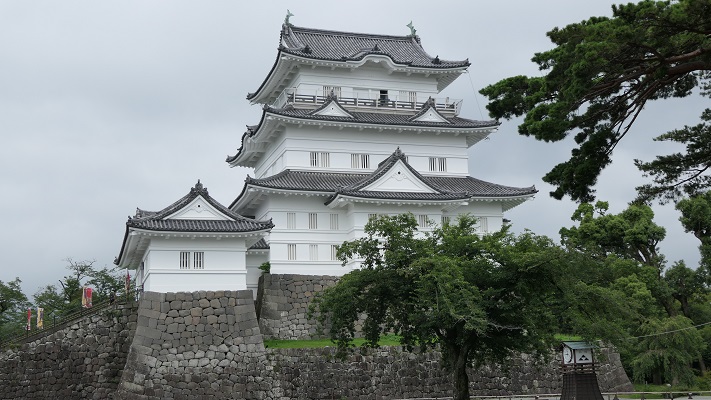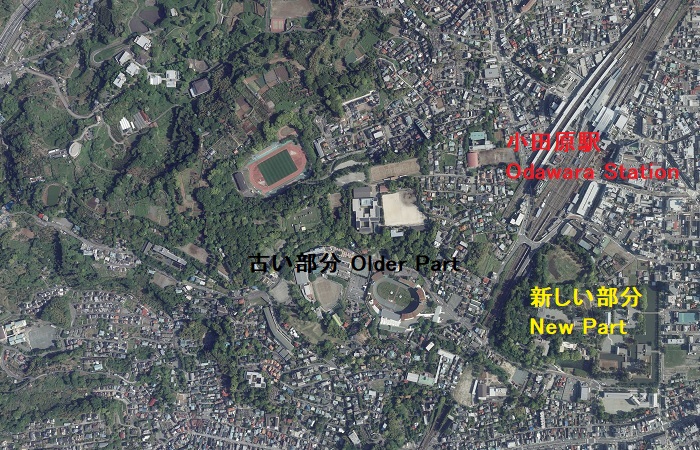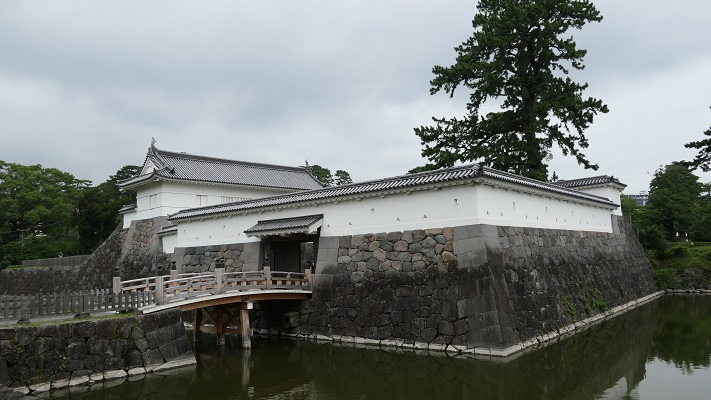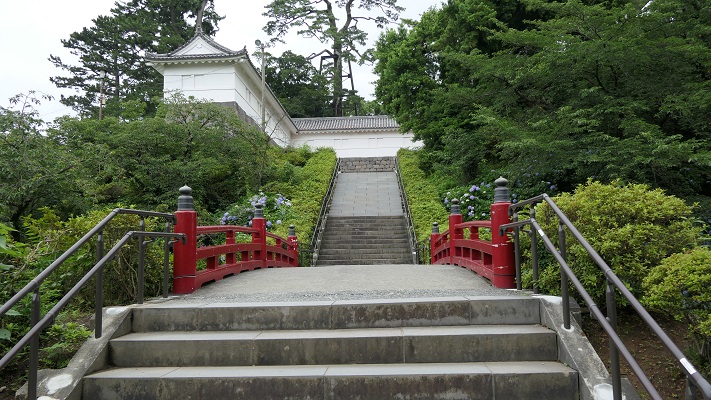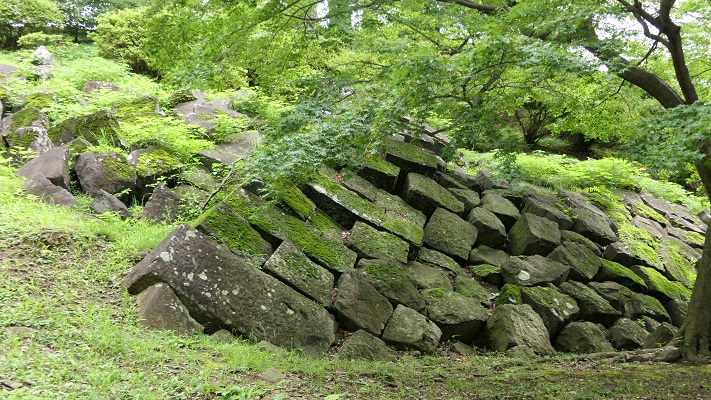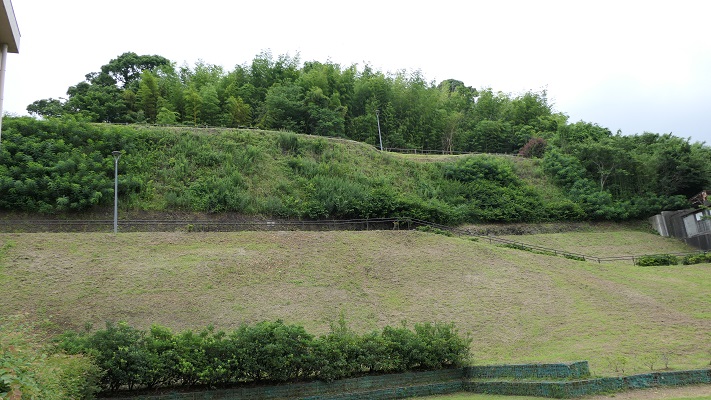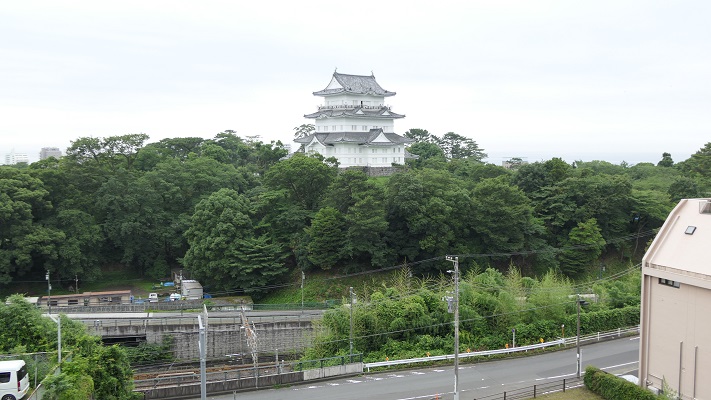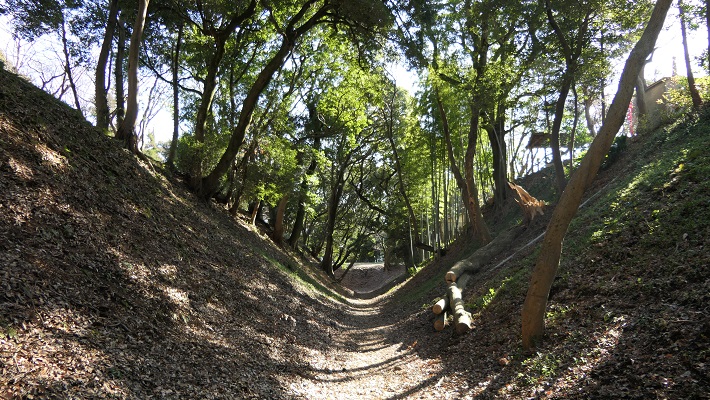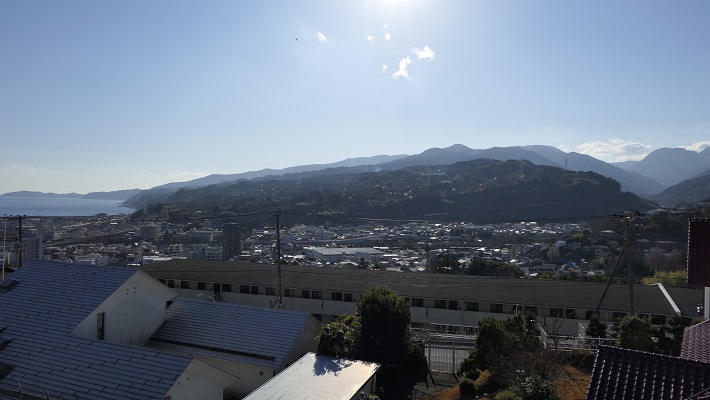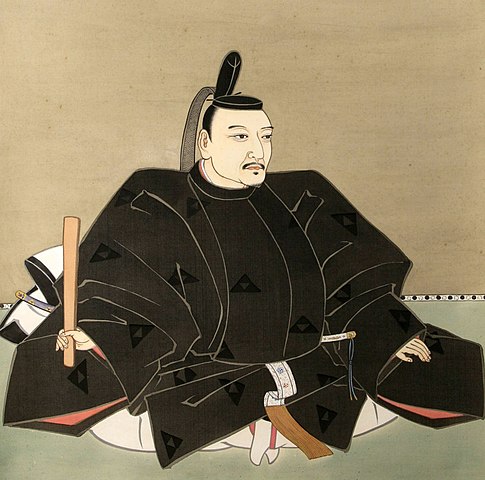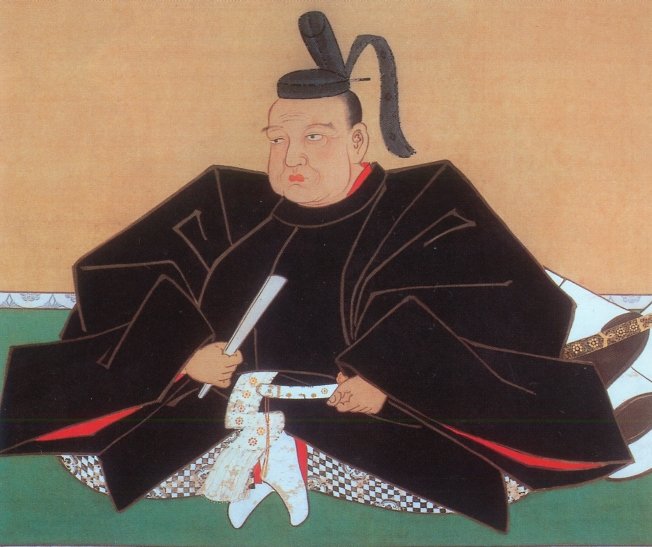立地と歴史~Location and History
三河ではよくある立地~Typical location in Mikawa
岡崎城は元々、矢作川と乙川の合流地点にある、龍頭山と呼ばれる小山の上にありました。この城は三河国(現在の愛知県東部に該当)に属してしました。この国においてはよく見られる戦略的立地です。
Okasaki Castle was originally located on a hill called Ryutozan, at the meeting point of the Yahagi River and Oto River. The castle belonged to Mikawa Province (what is now the eastern part of Aichi Pref.). It had s typical strategic location in the province.
城の最初の姿~Its first appearance
15世紀の中頃に西郷稠頼が最初にこの城を築いたと言われています。本丸にある堀の一つが彼の法名を取って「清海」堀と呼ばれています。その後、松平氏がこの城を支配していました。その子孫、徳川家康が更に城を拡張します。その当時の城がどうだったか定かでありませんが、いくつかの曲輪があり、石垣や天守はなかったと思われます。歴史家は、今に残る持仏堂曲輪の形が、その当時の城の特徴を残していると言います。
It is said that Tsuguyori Saigo first built the castle in the middle of the the 15th Century. One of the moats still carries his Buddhist name. It’s called “Seikai” moat of the Main Enclosure or “Honmaru”. After that, the Matsudaira clan took control over the castle. Their descendant Ieyasu Tokugawa improve it. We don’t know exactly what the castle looked like back then, but it seemed to have just a couple of enclosures, no stone walls, and no Main Tower or “Tenshu”. Historians say the shape of the Jibutsu-do enclosure shows the features of the castle at that time.
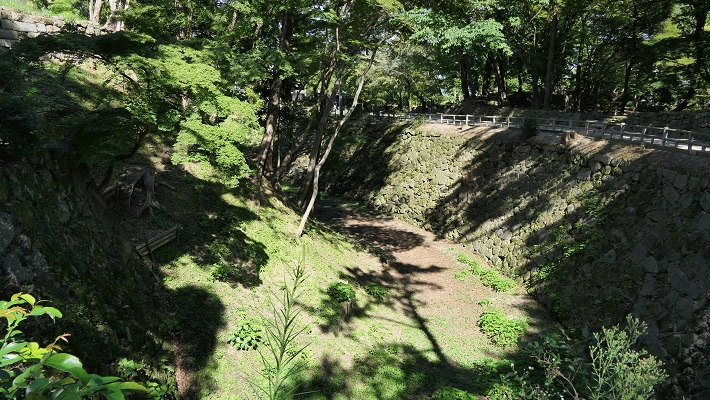
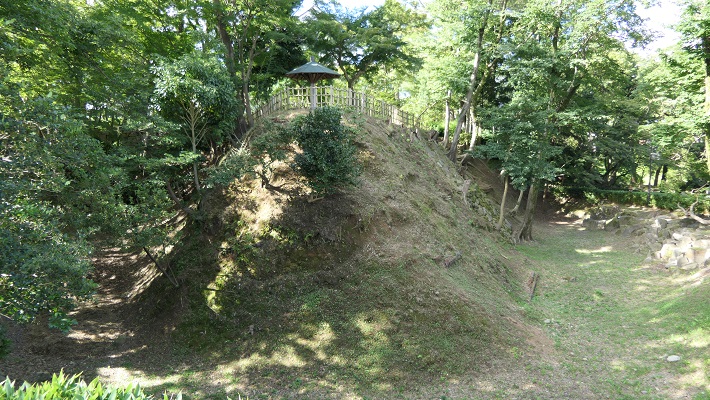
城の完成~The completion of the castle
豊臣氏に仕えた田中吉政が1590年に関東地方に移っていった徳川氏に代わって城に入ってきました。彼は、初代の天守を築き、石垣で取り囲み、外郭を巡らした城下町を作り、城を近代化しました。1600年に家康が天下を取った後は、城は江戸時代を通して譜代大名によって所有されました。本田氏は16世紀中頃までに、天守を置き替え、城の周りの石垣を完成させました。
Yoshimasa Tanaka who served the Toyotomi clan was governing the castle in 1590, instead of Tokugawa who had been transferred to Kanto Region. He modernized the castle by building the first Main Tower or “Tenshu”, surrounding it with stone walls, and making the castle town with an outline. After Ieyasu got the power in 1600, the castle was owned by hereditary feudal lords all through the Edo Period. The Honda clan replaced the Tenshu, and completed the stone walls around the castle by the middle of the 16 century.
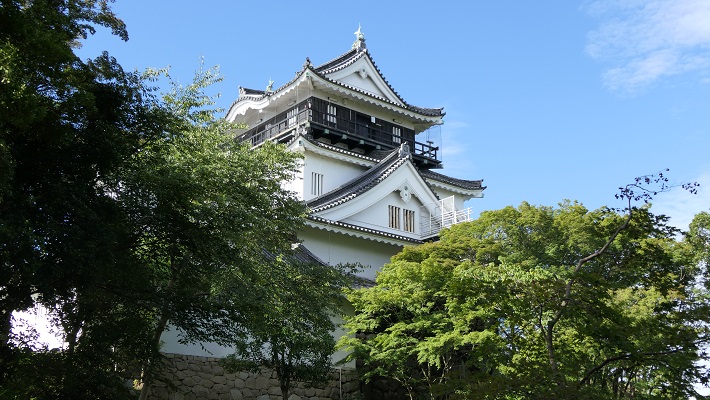
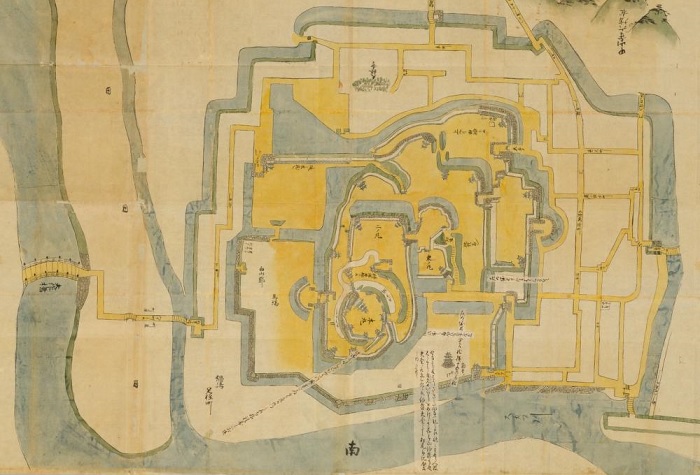
維持するのは大変~It was hard to maintain
城を統治した大名たちの領地や石高は大きくなかったのですが、幕府創始者である家康ゆかりの城として維持する必要がありました。更には川の氾濫や地震の被害も受けながら、城と周辺地の修繕、改修に努めました。2015年、乙川に沿った400mもの長さの石垣が発見されました。この石垣を築いた理由の一つは洪水を防ぐためだったようです。
Several clans that governed the castle didn’t have large territories and earnings, but they had to maintain it as the founder Ieyasu’s home. They also suffered from river floods as well as earthquakes. They struggled to repair and improve the castle and the area around. In 2015, 400m-long stone walls were discovered along the Oto River. One of the reasons for building them was to prevent floods.
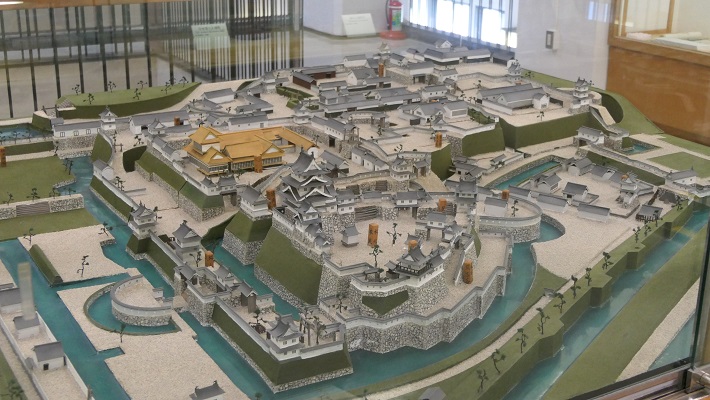

その後~Later History
日本最初の「公園」~The first “Park” in Japan
明治維新後、岡崎城は廃城となり、その全ての建物は撤去されました。城跡はその後すぐの1874年に岡崎「公園」となりました。20世紀の初め、有名な造園家である本田静六と、当時岡崎市長であった小瀧喜七郎は、木を植え、図書館や病院などの公共施設を建設し、公園を整備しました。
After the Meiji Restoration, Okazaki Castle was abandoned, and all of their buildings were demolished. The ruins were soon turned into a park called Okazaki “Park” in 1874. In the early 20th century, Seroku Honda, a famous garden designer, and Kishichiro Odaki, the mayor of Okazaki City at that time, improved the park by planting trees, and building public facilities such as a library, and a hospital.
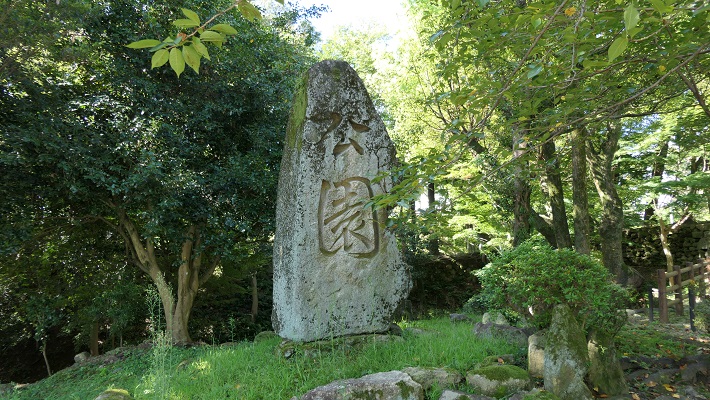

城の建物の再建~Rebuilding of castle buildings
第二次世界大戦後、公園は歴史公園としても注目されました。城の中心の石垣を伴った基礎部分はよく残っていたためです。1959年、元からあった天守台の上に天守が復興されました。元の天守の詳細は不明でしたが、建築家の城戸久が古写真を参考にして設計しました。戦後日本復興のシンボルの一つと言われています。最近、大手門や東隅櫓なども伝統的建築物として再建されてます。
After World War II, the park was also featured as a historical park, since the foundation with stone walls in the center of the castle still remained. In 1959, the Tenshu was reconstructed on the original Tenshu base. The details of the original Tenshu were uncertain, but Hisashi Kido, an architect, designed it based on old photographs. It is said to be one of the symbols for the reconstruction of Japan. More traditional buildings were recently restored like the Main Entrance Gate “Ote-mon” and the East Corner Turret “Higashi-Sumi Yagura”.
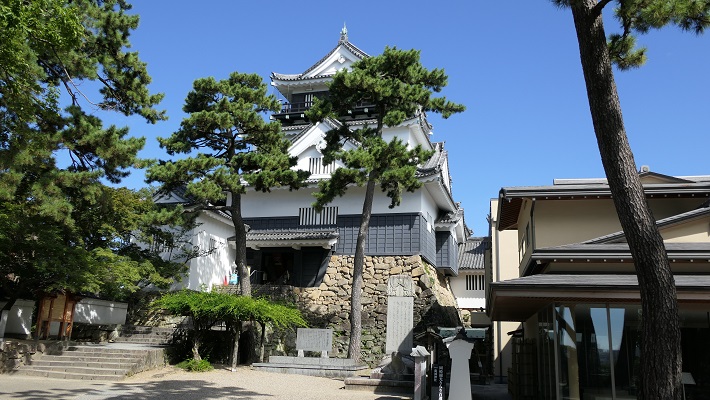
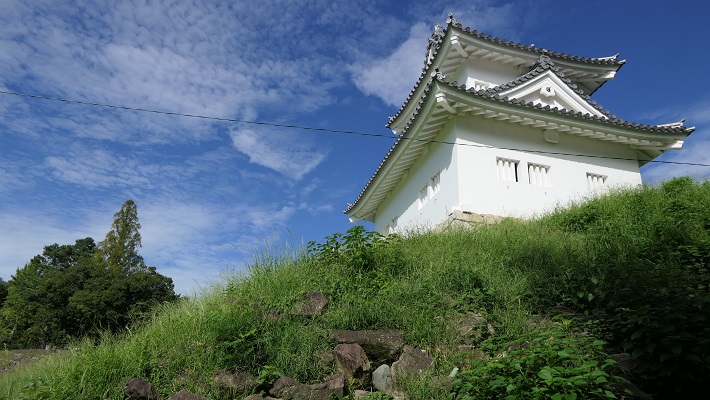
最近の動向~The recent movement
更に最近では、岡崎市は公園を、徳川幕府の創始者、徳川家康の生誕地として位置づけようとしてます。恐らくこれは、観光振興や市のシンボルとするためなのでしょう。市は更に城の建物を復元しようとしていますが、歴史家は植物が育つことで石垣が痛んだり、城としての景観が損なわれると指摘しています。困ったことですが、どう解決するのか見ていきたいと思います。
In more recent years, Okazaki City has been trying to identify the park as the place where Ieayasu Tokugawa, the founder of the Tokugawa Shogunate was born. That’s probably done for tourism and in order to make it a symbol of the city. The city plans to restore more castle buildings, but historians say that growing plants are damaging the stone walls and landscape for the castle. Removing some plants is essential for conserving the ruins of the castle. That’s troubling. I am yet to see how they will solve this problem in the future.
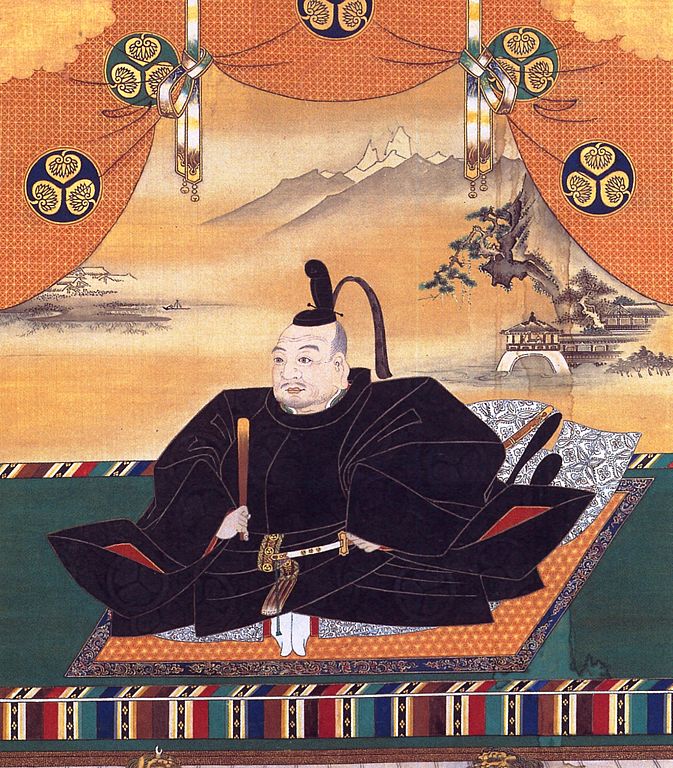
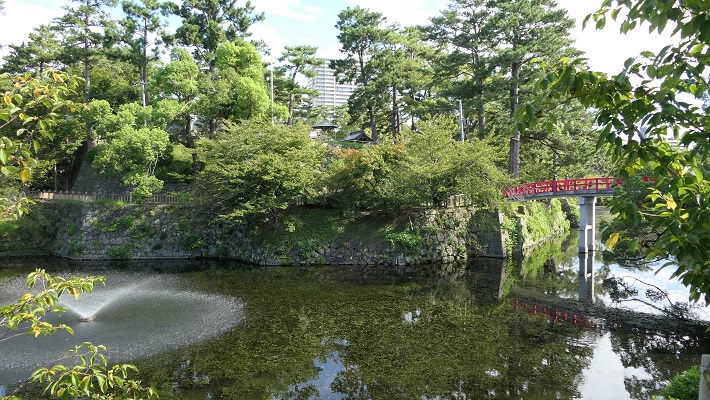
特徴~Features
城エリアに入る~Entering the castle area
城周辺の地図~The map around the castle東岡崎駅から来られる場合は、乙川の川縁から城の遠景が目に入ってきます。そこには、2015年に発見された長い石垣が川岸に沿っています。
If you come from Higashi-Okazaki Station, you can see the view of the castle ruins from the riverside of the Oto River. There are long stone walls along the riverside which were discovered in2015.
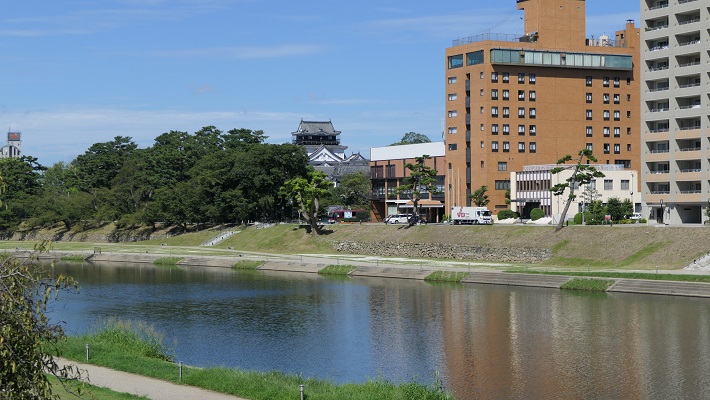
最初に到着するのは菅生曲輪で、丘の上の城の中心部分も見えます。
You will first reach the Sugo enclosure where you can also see the center of the castle on the hill.
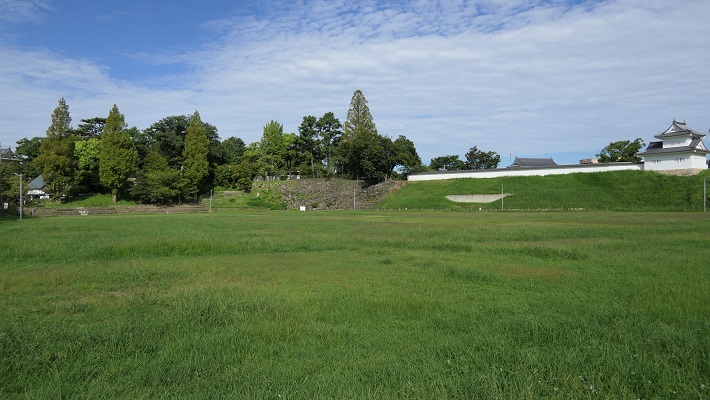
復元された大手門に行くには、東曲輪に沿って掘られた道を進みます。この道はかつては堀の底でした。
To reach the restored Ote-mon Gate, go through the road cut along the Higashi enclosure. The road was once used as the bottom of the moat.
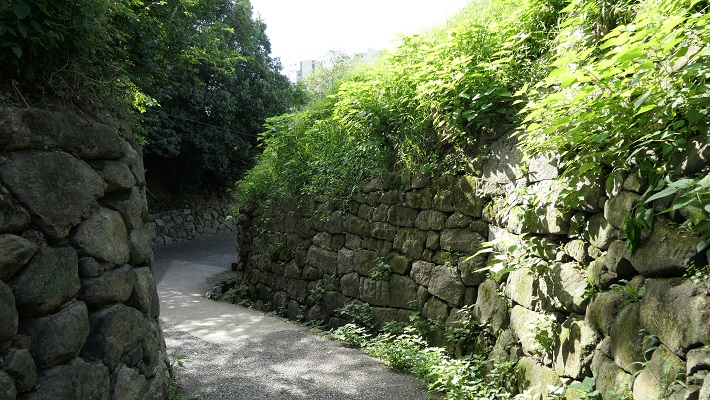
大手門は岡崎公園の入り口でもあります。門を過ぎると、花壇がある近代公園となった二の丸に入っていきます。
The gate is also the entrance of Okazaki Park. After passing the gate, the Ninomaru enclosure can be seen as a modern park with a flower garden.
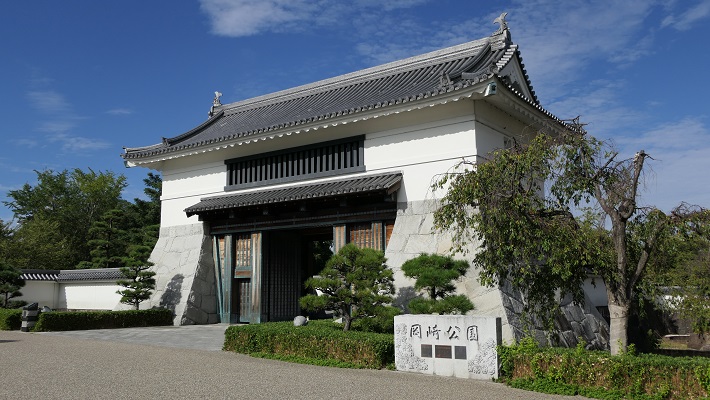
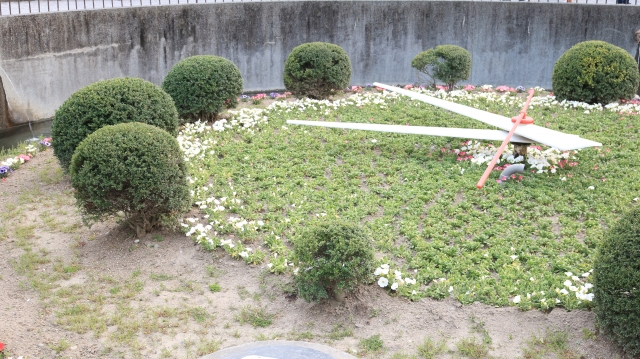
本丸エリア~The Honmaru area
本丸の地図~The map of Honmaru更に本丸の方に進むと、清海堀の前の持仏堂曲輪が見えます。この曲輪は明らかにその丸い形が突き出た格好になっています。空堀により囲まれています。これらは古い時代の徳川の城の特徴であり、家康の時代まで遡る可能性があります。
Going further to the Main Enclosure or “Honmaru”, you can see the Jibutsu-do enclosure in front of the Seikai moat. The enclosure clearly stick out due to its round shaped. It is surrounded with earthen walls. They are the features of the older Tokugawa castle’s defense system that could date back to the Ieyasu Era.
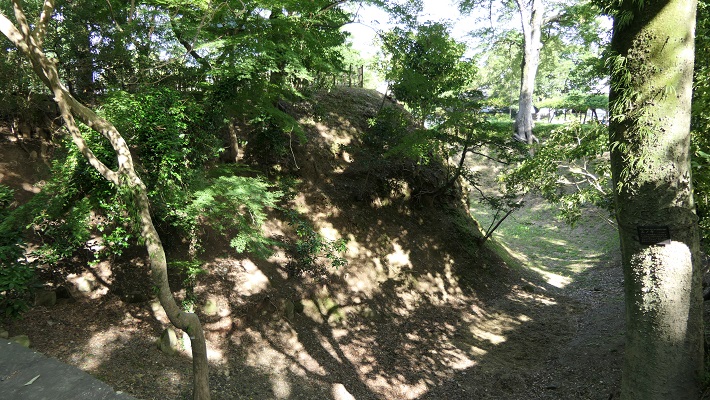

本丸へは大手口、埋門口、風呂谷門口の3つのルートがあります。石垣が残っており、恐らく田中または本田時代に築かれたものです。過去には門や櫓によって厳重に守られていました。
There are three routes to Honmaru, the Ote route, the Uzumi-mon Gate route, and the Furotani-mon Gate route. Their stone walls still remain and they were probably built in the Tanaka and Honda Era. The routes must have been strictly protected by gates and turrets in the past.
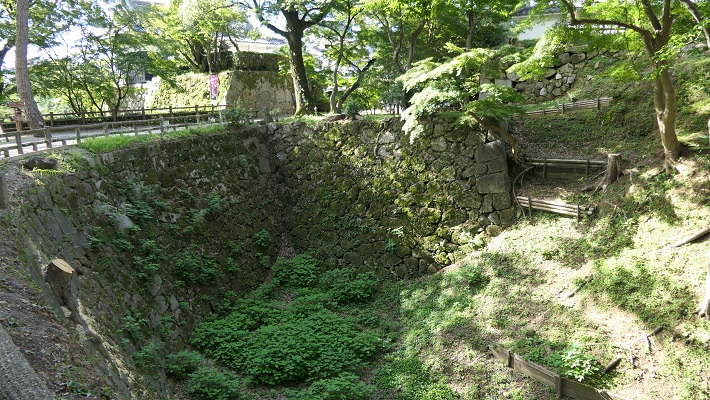
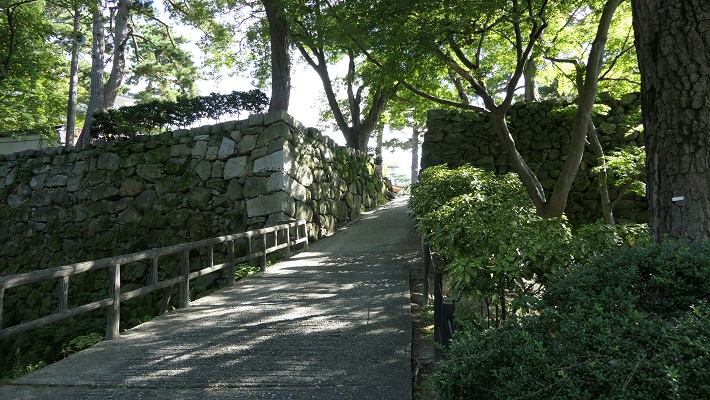

復興天守は実際にはビル建築であり、歴史博物館としても使われていますが、天守台の石垣は田中氏によって積み上げられました。
The reconstructed Tenshu is actually a modern building which is also used as a historical museum, but the stone walls for its base were originally built by the Tanaka clan.
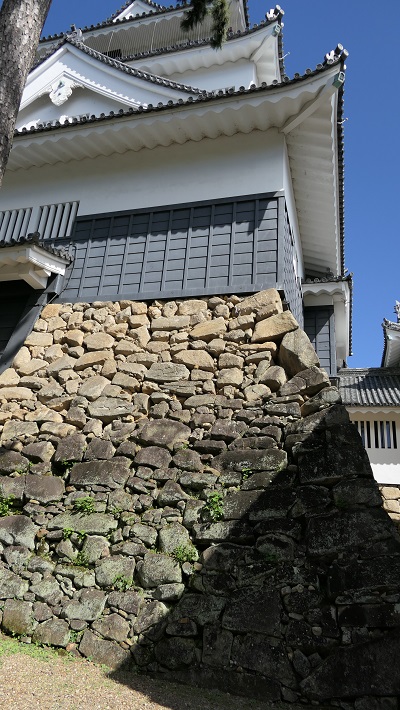
家康の史跡~Ieyasu’s landmarks
更には、徳川家康にまつわる史跡としては、家康の銅像や家康公産湯の井戸があります。
In addition, there are landmarks related to Ieyasu Tokugawa such as his statues and the well which was used for his first bath.
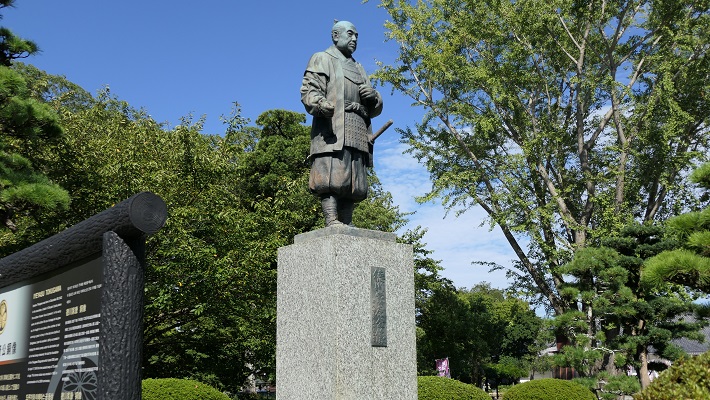

私の感想~My Impression
岡崎城の城跡には過去の遺産が染み渡っています。岡崎公園は城の主要の曲輪があった場所に作られました。外郭を含む他の曲輪は既に市街地に変わってしまっています。城の研究や発掘が進めば、新しい発見もあるでしょう。そういったニュースを聞くのが楽しみです。
The ruins of Okazaki Castle are steeped in along legacy. Okazaki Park is built on the spot of the primary enclosures of the castle. Other enclosures including the outline were already turned into the city area. As the studies and the excavation for the castle increase, new discoveries will come. I’m looking forward to hearing about them.
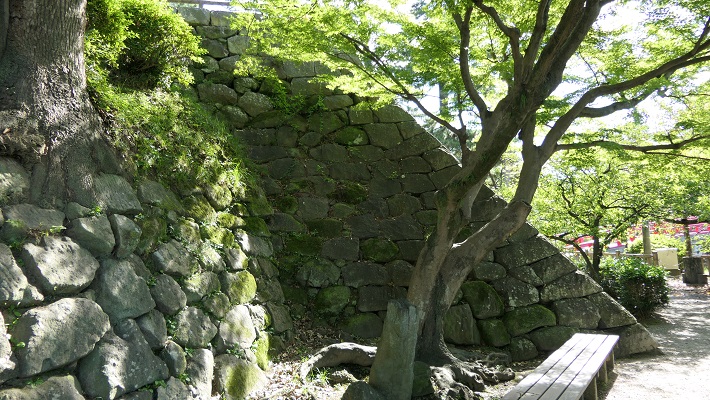
ここに行くには~How to get There
名鉄線東岡崎駅から歩いて約15分です。
東京から東岡崎駅まで:
東海道新幹線に乗り、豊橋駅で名鉄名古屋本線に乗り換えてください。
名古屋から東岡崎駅まで:
名鉄名古屋駅から名古屋本線に乗ってください。
車で行く場合:東名高速道路岡崎ICから約3kmです。公園に駐車場があります。
It takes about 15 minutes From Meitetsu Higashi-Okazaki station to get there on foot.
From Tokyo to Higashi-Okazaki st.:
Take the Tokaido Shinkansen superexpress to Toyohashi station, and transfer for Meitetsu Nagoya line.
From Nagoya to Higashi-Okazaki st.:
Take the train on Meitetsu Nagoya line at Meitetsu-Nagoya station.
If you want to go there by car: It is about 3 km away from the Okazaki IC on Tomei Expressway. The park offer a parking lot.
リンク、参考情報~Links and References
・岡崎公園、岡崎市公式観光サイト~Okazaki Park
・「三河岡崎城/愛知中世城郭研究会」戒光祥出版(Japanese Book)
・「よみがえる日本の城3」学研(Japanese Book)


